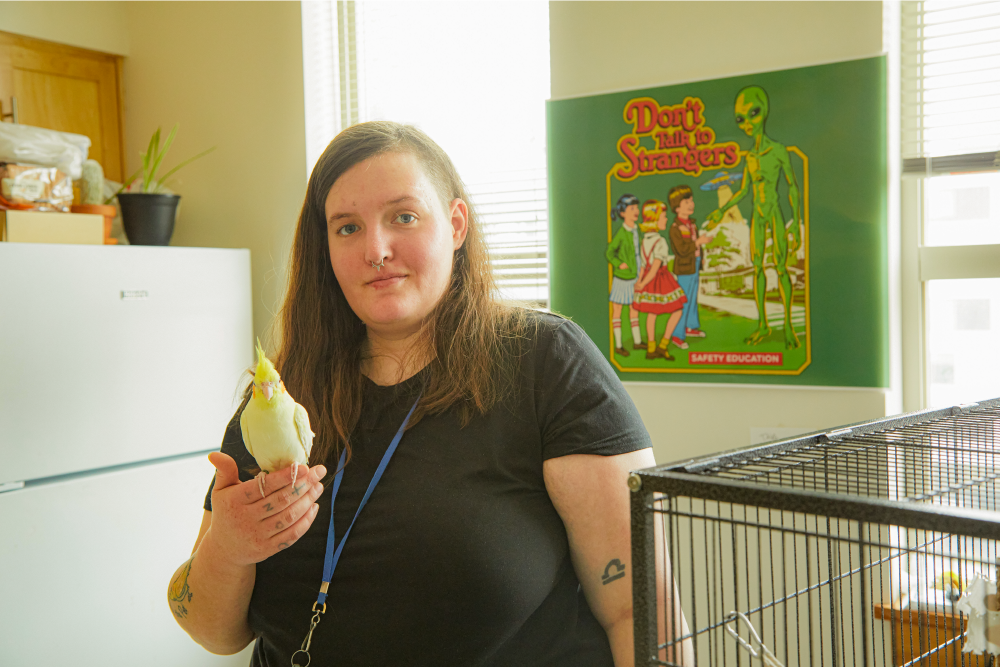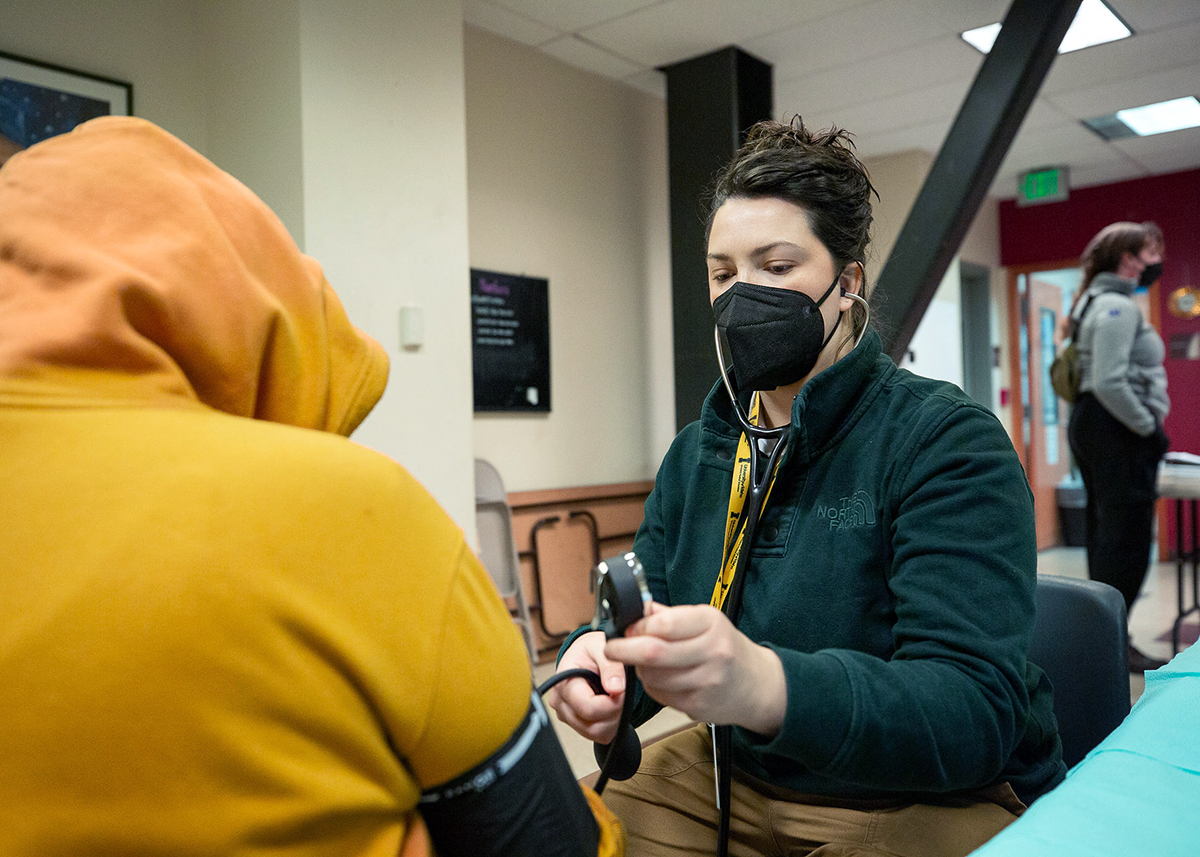
Residents of the Langdon and Anne Simons Senior Apartments.
At Plymouth Housing, we are focused on helping residents achieve stability and improve their quality of life. To do this, we use methods that are backed by science and considered best practices in our field. One of those approaches is called harm reduction. In addition to offering recovery-focused buildings, the Plymouth buildings focused on harm reduction allow us to help residents work toward stability in the way that’s right for them.
For example, one Plymouth resident, Darryl (who shared his story with KUOW last year), lives in one of Plymouth’s harm reduction buildings and manages his substance use through a Plymouth program called contingency management. Another resident, August, chose a recovery-focused Plymouth building to address her previous drug use.
More than half of the people who live at Plymouth Housing are navigating substance use disorder—classified as a disability under the Americans with Disabilities Act (ADA). And this comes as no surprise. Looking at homelessness nationally, we see that some (not all) people who have experienced homelessness use substances. This can be for adaptive reasons: to stay awake in a situation where one’s personal space and belongings are completely unprotected. It can also be to cope with trauma—the effects of which can alter one’s DNA and impair brain function, according to research by Dr. Nadine Burke Harris, former Surgeon General of California.

Plymouth resident August with her cockatiel, Pika.
For people navigating trauma (not to mention the stigma of having experienced homelessness), harm reduction offers an approach that’s both proven, and non-judgmental.
At Plymouth, this means we work with residents in achieving their goals (including abstinence) and give them the tools and information they need to stay safe along the way. Sometimes this looks like one-on-one counseling or trying a variety of different approaches to find what will stick. Other times, this might look like providing someone who plans to use drugs with sterile paraphernalia to help them avoid further harmful effects like infections while they work toward goals that are within reach.
Healing from the trauma of homelessness is a journey, not a destination. Life skills aren’t learned overnight, and managing challenges like mental health and substance use takes time. Our staff dedicate time to building rapport with residents and help them to build skills as they work at their individual pace and ability.
Experts Agree: Harm Reduction Is Effective
Every presidential administration in the last 10 years has acknowledged the success of harm reduction, as it has been scientifically proven to reduce harms associated with drug use and increases the likelihood of an individual to initiate substance use disorder treatment.
Harm reduction focuses on strategies to support an individual’s safety and health—but at its core it is about providing care with dignity, autonomy, and compassion. As the National Institute on Drug Abuse describes it, “’Harm reduction’ is defined as interventions aimed to help people avoid negative effects of drug use, but many understand harm reduction as a way to meet people where they are with kindness and respect.”

Photo by Prenz Sa-Ngoun.
There is a huge amount of research behind harm reduction as an effective approach to improving outcomes, including here in Seattle. Dr. Susan E. Collins, PhD (a professor, licensed clinical psychologist, and co-director of the Harm Reduction Research and Treatment Center at the University of Washington) is a leading researcher focused on substance use, with more than 80 peer-reviewed articles on the topic. In her words, “Harm reduction interventions, when thoughtfully executed with community input, does not enable more use; instead, it decreases substance-related harm and even use.” Plymouth, like the Biden-Harris Administration, the King County Coalition on Homelessness, DESC, and many, many others, is committed to providing the support people want—not forcing them into ineffective treatments.
Abstinence is an effective approach for some people with substance use disorder, and we applaud the organizations that provide treatment with abstinence as the goal—including one of Plymouth’s buildings. For others, an abstinence-only approach would set them up for failure.
At Plymouth Housing, we are committed to working with each individual to support their path to health and stability, and to set people up for success. Making housing contingent on abstinence across the board fails to recognize the reality that abstinence is not realistic, or not possible, for everyone who needs housing support.
For more information about harm reduction, see:
- This Plymouth Housing video on harm reduction featuring people involved in and impacted by this practice
- Op-ed by Dr. Collins
- The Substance Abuse and Mental Health Services Administration
- National Institute on Drug Use
- This video featuring different perspectives on harm reduction